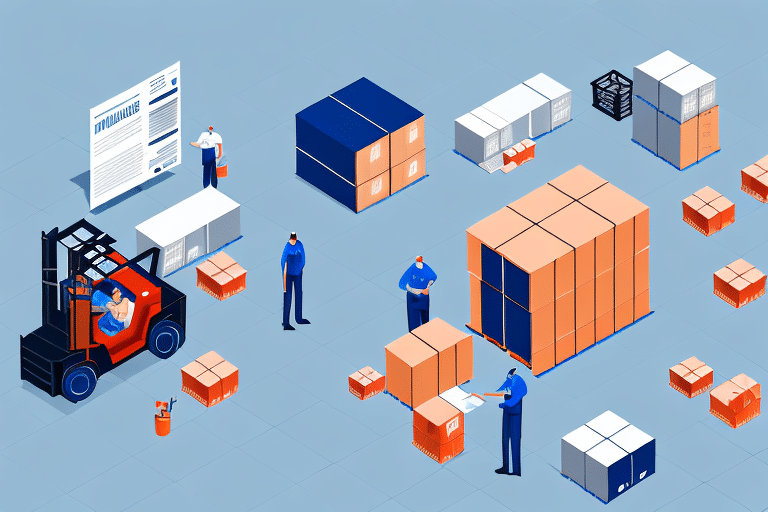In-House vs Outsourcing Fulfillment: Which Option is Best for Your Business?
Effective order fulfillment is a critical component of running a successful business. It directly impacts customer satisfaction, operational efficiency, and overall profitability. When deciding how to manage fulfillment, businesses typically consider two primary options: in-house fulfillment and outsourcing. This guide explores the advantages and disadvantages of each approach to help you determine the best fit for your company.
Understanding the Basics of Fulfillment
Fulfillment encompasses the entire process of receiving, processing, and delivering customer orders. This includes inventory management, order picking and packing, shipping, tracking shipments, and handling returns or exchanges. As reported by Statista, proper fulfillment can significantly reduce operational costs and improve customer satisfaction.
Key Components of Fulfillment
- Inventory Management: Tracking stock levels to meet customer demand without overstocking.
- Order Processing: Efficiently picking, packing, and preparing orders for shipment.
- Shipping and Delivery: Choosing reliable carriers and ensuring timely deliveries.
- Customer Communication: Providing order status updates and handling inquiries.
- Returns Handling: Managing returns and exchanges smoothly to maintain customer trust.
Modern fulfillment operations increasingly rely on technology to enhance efficiency and accuracy. Tools such as barcode scanners, automated picking systems, and fulfillment software are essential for streamlined processes.
Advantages of In-House Fulfillment
In-house fulfillment offers several benefits, particularly for businesses that prioritize control and customization:
Complete Control Over the Process
Managing fulfillment internally allows businesses to oversee every aspect of the process. This enables customization to meet specific business needs and customer expectations, ensuring that the fulfillment process aligns closely with the company's brand and service standards.
Enhanced Communication and Collaboration
Having the fulfillment team in-house facilitates better communication with other departments such as sales and customer service. This close collaboration can lead to quicker problem resolution and more coordinated efforts across the organization.
Potential Cost Savings
While initial setup costs can be high, in-house fulfillment can lead to long-term savings by eliminating third-party fees associated with storage, handling, and shipping. Small businesses, in particular, may find that managing fulfillment internally becomes more cost-effective as they scale.
Disadvantages of In-House Fulfillment
Despite its benefits, in-house fulfillment comes with several drawbacks:
High Initial Investment and Ongoing Costs
Setting up an internal fulfillment operation requires significant capital investment in staff, equipment, and warehouse space. Additionally, ongoing expenses for maintenance, training, and management can strain resources, especially for smaller businesses.
Scalability Challenges
Handling fluctuating demand can be difficult with in-house fulfillment. During peak periods, companies might struggle to scale operations quickly, leading to delays and dissatisfied customers.
Risk of Errors and Inefficiencies
Without advanced systems and experienced personnel, in-house operations may experience higher rates of order errors, which can result in returns, loss of customers, and damage to the company's reputation.
Advantages of Outsourcing Fulfillment
Outsourcing fulfillment can offer several strategic advantages:
Cost-Effectiveness
Partnering with a third-party logistics provider (3PL) can reduce costs related to infrastructure, labor, and technology. According to a report by Forbes, outsourcing can lower operational expenses and allow businesses to allocate resources more efficiently.
Scalability and Flexibility
Third-party providers can easily adjust to changes in demand, accommodating seasonal spikes or rapid growth without the need for businesses to make significant investments.
Access to Expertise and Advanced Technology
Outsourced fulfillment providers often have specialized knowledge and access to the latest fulfillment technologies. This can lead to improved accuracy, faster shipping times, and better overall logistics management.
Disadvantages of Outsourcing Fulfillment
Despite its benefits, outsourcing fulfillment has its downsides:
Less Control Over the Fulfillment Process
Delegating fulfillment to a third party means relinquishing some control. This can lead to inconsistencies in order handling, shipping times, and customer service, which may affect your brand's reputation.
Potential Hidden Costs
While outsourcing can reduce some costs, there may be hidden fees for storage, handling, or additional services. It's crucial to thoroughly review contracts and understand all potential expenses.
Dependency on Third-Party Providers
Relying on an external partner for fulfillment can pose risks if the provider faces operational issues or fails to meet your service standards. Ensuring you choose a reputable and reliable provider is essential.
Cost Factor: Which is More Affordable?
The cost-effectiveness of in-house versus outsourced fulfillment varies based on several factors, including business size, volume of orders, and specific operational needs. Generally, outsourcing is more affordable for small to medium-sized businesses due to lower upfront costs and scalability. However, larger enterprises might benefit from the control and customization that in-house fulfillment offers.
When evaluating costs, consider both initial investments and ongoing expenses. Outsourcing typically involves a predictable fee structure, making budgeting easier, whereas in-house operations may present variable costs that can fluctuate with demand.
Factors to Consider When Choosing Between In-House and Outsourcing Fulfillment
When deciding between in-house and outsourcing fulfillment, consider the following factors:
- Business Size and Order Volume
- Budget and Available Resources
- Customer Expectations and Service Standards
- Level of Control and Customization Needed
- Availability of Reliable Fulfillment Partners
Additionally, the nature of your products can influence your decision. Fragile or perishable items may require specialized handling that outsourced providers are better equipped to manage, while simple, durable products might be efficiently handled in-house.
The Importance of Scalability in Fulfillment Solutions
Scalability ensures that your fulfillment operations can grow alongside your business. A scalable fulfillment solution can handle increased order volumes without compromising efficiency or customer satisfaction. According to Harvard Business Review, scalable fulfillment processes are crucial for long-term success in the competitive e-commerce landscape.
Outsourcing fulfillment can provide the flexibility needed to scale operations quickly, accommodating growth without the need for significant additional investment.
Case Studies: How Other Businesses Have Chosen Between In-House and Outsourcing Fulfillment
Various businesses have opted for different fulfillment strategies based on their unique needs:
- Nike: Outsources fulfillment to multiple third-party providers to handle its global distribution efficiently.
- Amazon: Utilizes a hybrid model with both in-house fulfillment centers and outsourced partnerships to manage its vast inventory and high order volumes.
- Zappos: Maintains in-house fulfillment to ensure fast, free shipping and exceptional customer service, aligning with its brand promise.
Key Questions to Ask Yourself Before Making a Decision
Before deciding between in-house and outsourcing fulfillment, consider the following questions:
- What are the main challenges in my current fulfillment process?
- How much control and customization do I need over fulfillment operations?
- What are my long-term business growth goals, and how does fulfillment fit into them?
- Do I have the resources to invest in and manage an in-house fulfillment operation?
- Are there reputable and cost-effective fulfillment providers available that can meet my needs?
Comparing Service Quality Between In-House and Outsourced Fulfillment
Service quality is a crucial factor when choosing between in-house and outsourced fulfillment. Consider the following aspects:
- Turnaround Time: In-house operations may offer quicker response times, while outsourced providers can leverage scale to handle large volumes efficiently.
- Order Accuracy: Accuracy ensures customer satisfaction. Outsourced providers often use advanced technology to minimize errors, but effective in-house management can achieve similar results.
- Customer Service: In-house fulfillment allows for direct oversight of customer interactions, whereas outsourced fulfillment requires clear communication and robust service level agreements (SLAs).
The Role of Technology in Streamlining Your Order Fulfillment Process
Technology plays a pivotal role in enhancing fulfillment efficiency and accuracy. Key technological solutions include:
- Inventory Management Software: Automates stock tracking and replenishment, reducing the risk of overstocking or stockouts.
- Automated Picking Systems: Speeds up the order picking process and minimizes human error.
- Shipping and Tracking Tools: Provide real-time updates to customers and improve transparency in the fulfillment process.
- Warehouse Management Systems (WMS): Integrates various aspects of warehouse operations, from receiving and put-away to picking and shipping.
Investing in the right technology can significantly enhance both in-house and outsourced fulfillment operations, leading to better efficiency and customer satisfaction.
Evaluating the Pros and Cons of Different Types of Outsourced Fulfillment Providers
There are various types of outsourced fulfillment providers, each offering distinct advantages and potential drawbacks:
- Third-Party Logistics Providers (3PLs): Offer comprehensive logistics services, including transportation, warehousing, and distribution. They are suitable for businesses looking for an all-in-one solution.
- Fulfillment Centers: Specialized in handling storage, picking, packing, and shipping. They are ideal for e-commerce businesses seeking streamlined fulfillment services.
- Dropshipping Suppliers: Directly ship products from the manufacturer to the customer, eliminating the need for inventory management. Best suited for businesses that want to minimize inventory risks.
Carefully evaluate each provider type to determine which aligns best with your business needs and goals.
Challenges Faced by Businesses When Switching Between In-House and Outsourced Fulfillment
Transitioning between in-house and outsourced fulfillment can present several challenges:
- Cost and Time: Setting up a new fulfillment model requires investment and can be time-consuming.
- Operational Disruptions: Changes in fulfillment processes can temporarily affect order processing times and customer service.
- Staff Training: Employees may need to learn new systems and procedures, which requires time and resources.
To mitigate these challenges, thorough planning and choosing a reliable fulfillment partner are essential for a smooth transition.
Conclusion
Deciding between in-house and outsourced fulfillment is a strategic choice that depends on your company's specific needs, resources, and growth plans. In-house fulfillment offers greater control and customization, which can be beneficial for maintaining brand standards and managing unique product requirements. On the other hand, outsourcing fulfillment can provide cost savings, scalability, and access to advanced technologies that may not be feasible internally.
By carefully evaluating the benefits and drawbacks of each option, and considering factors such as cost, scalability, control, and customer service, you can make an informed decision that supports the long-term success of your business.






















